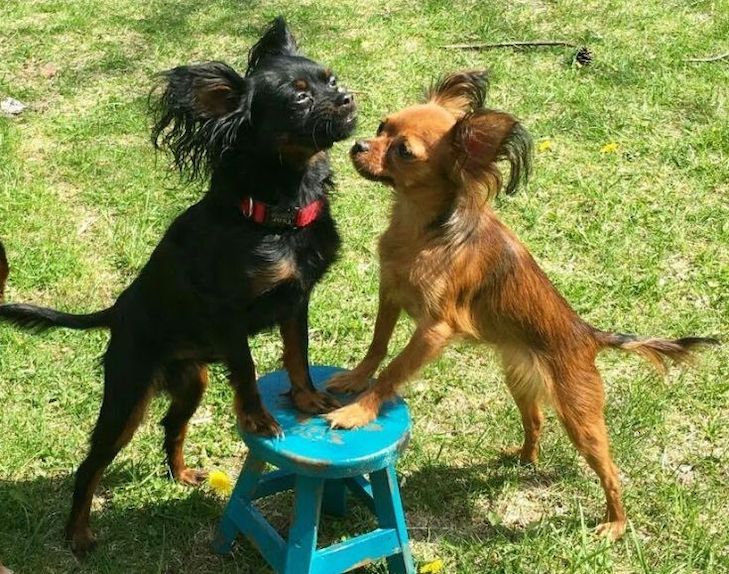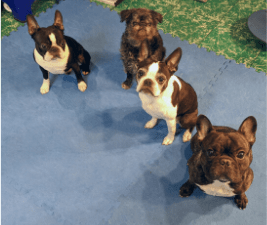We were excited to read this week that the Russian Toy is the latest toy dog breed recognized by the American Kennel Club and added to the Toy Group for conformation shows.
We’ve done a little research and while these little dogs may resemble Chihuahuas to a degree, they are distinctly different, lighter and taller, and originating half-way around the globe! The Russian Toy was developed in Russia, possibly as far back as the 1700s. And we never heard of them until now! This photo of the adorable Russian Toy dogs here belongs to the national club, the Russian Toy Club of America, and we thank them for the introduction to their beloved breed!
Purebred exists for a reason
We know that not everyone is as fascinated by dog breeds as we are, but we’ve loved dog shows since we were little girls and we understand there is value in breeding dogs to a standard for type – which includes looks as well as personality.
Now, with the addition of the Russian Toy, there are 23 breeds in the AKC Toy Group. They range from the sturdy Pug to the elegant Italian Greyhound. From the long, flowing coat of the Yorkshire Terrier to the bare skin of the Chinese Crested.
There is a toy dog breed for everyone – taking into account your personal taste, lifestyle, exercise level, grooming ability, etc. Whatever your particular, unique circumstances are, there’s a dog breed that would fit in perfectly and enhance your life. And we firmly believe that everyone’s life is improved when they experience the unconditional love of a dog.
All dogs’ lives are valued
We’re not saying that purebred dogs are “better” than other dogs. We do know, however, that they’re more predictable. All Poodles will have similar fur and similar grooming needs, from the largest Standard Poodle to the tiniest toy Poodle. Poodle owners know what they’re getting.
Poodle-crosses, or doodles? It depends on the cross, and the unique genetic set that particular dog gets. If it’s a “Labradoodle” it may have Lab fur, Poodle fur, or a mixture of the two. (Did you get only the “good” genes from your parents? We didn’t, either.) Groomers tend to charge more for “doodles” because they’re more work than other dogs.
Looks are certainly part of the package – personality is, too. A Brussels Griffon’s personality is much different from a Pug’s. One Griff and Pug breeder we know always said she added Pugs to her life because she wanted to be smarter than some of the dogs in her house. Having never had a Pug, we’ll have to take her word for it. We know they’re adorable, but we can’t vouch for their intelligence.
Shop or adopt
As long as people get dogs from responsible sources, be it breeder, shelter, or rescue, it’s a good thing. And all of those responsible sources will be able to speak to the health and soundness of every dog under their care. Both physical and mental stability are important.
Getting a toy dog is a huge step for anyone. It changes life forever and is an enormous disruption. That’s why doing your research and finding exactly the right dog for you is so important. If it’s true that “you only live once,” you deserve to have the perfect companion for you.










